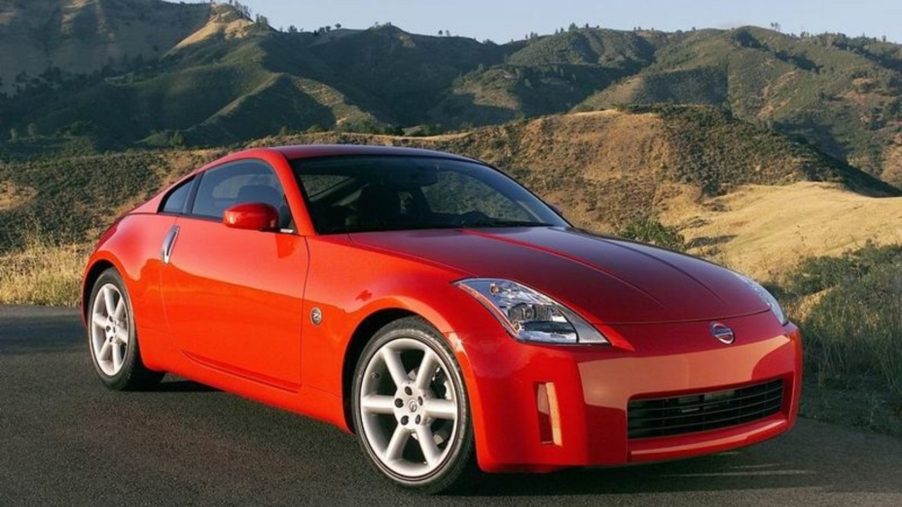
7 Most Common Nissan 350Z Problems After 100,000 Miles
Common high-mileage Nissan 350Z problems article highlights:
- While generally reliable, high-mileage Nissan 350Zs have some problem areas worth mentioning
- Some problems, particularly synchro wear, timing chain guide and tensioner failure, and broken fuel dampers, mainly affect 2003-2006 350Zs
- Others, though, including oil consumption, sensor failure, and clicking driveshafts, affect all 350Zs
If you want an affordable way of expressing your enthusiast artistry, the Nissan 350Z makes an excellent canvas. This highly customizable sports car can still shred tires in drifting, scrape paint in stance culture, and everything in between. And not only is it cheap, but the first modern Nissan Z is reliable enough to take a beating.
Still, even the 350Z has some problems and issues that pop up as the miles pile on. Some of these, like dirty throttle bodies, worn shocks, and chipped plastics, come with age and general wear and tear. Others, though, are specific to the 350Z. So, if you’re scouring for a high-mileage Nissan 350Z, here’s what to look out for.
Oil consumption is a common Nissan 350Z problem
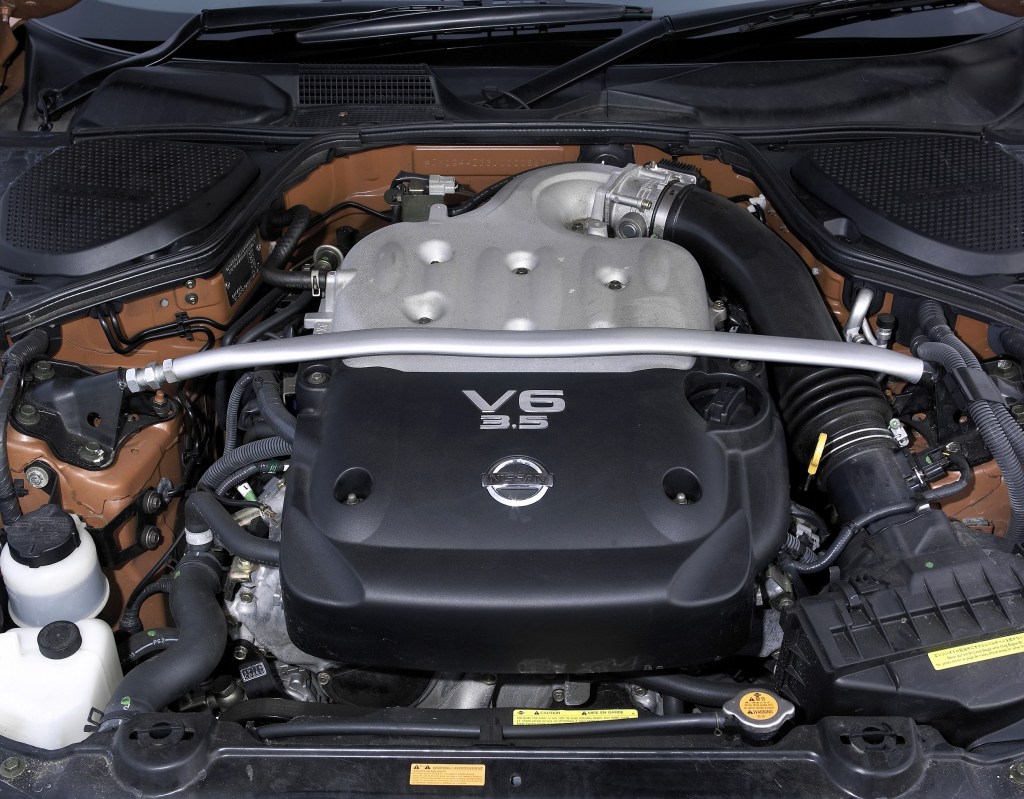
Much of the Nissan 350Z’s tuner-friendly status is built around its engine. Whether in 3.5-liter or 3.7-liter form, the Nissan VQ V6 has a reputation for stout durability and reliability. However, it’s not without its flaws.
The Nissan 350Z two versions of the 3.5-liter VQ35 V6. 2003-2006 Zs have the VQ35DE, while 2007-2009 models use the VQ35HR. And both engines are known to burn and otherwise consume oil. Tuning Pro says burning a quart of oil every 1000-2000 miles isn’t unheard-of in high-mileage 350Zs. Furthermore, the VQ35DE’s valve cover gasket can fail due to age and time. And when it does, you’ve got an oil leak on your hands.
It’s unclear why the 350Z has an oil consumption problem. But it appears that Nissan didn’t consider it a flaw, as it never issued a recall about it. Also, while burning oil can damage your piston rings and catalytic converters over time, “it’s not as big of an issue as it sounds,” Low Offset claims.
Now, there’s no ‘repair’ per se for the Nissan 350Z’s oil problem, unless it’s leak-related. However, Tuning Pro says that VQs tend to consume more oil when subjected to short-distance, high-idling situations. Some also recommend shortening the oil-change interval and using a heavier-weight oil. It’s worth noting that Nissan lists two oil grades for the 350Z: 10W-30 in hot climates and 5W-30 in cold ones.
So, while high-mileage 350Zs often chug oil, there are ways of mitigating this problem.
Nissan 350Zs with VQ35DE engines can have timing chain-related problems
The good news about the Nissan 350Z’s VQ engines is that they use timing chains, which last longer than belts. But there’s also some bad news, particularly with 2003-2006 cars. While the chain itself is durable, its guides and tensioners aren’t. And if they fail, not only do you risk chain damage but engine damage and outright failure.
Luckily, there are some signs that a used Nissan 350Z has a timing chain problem. The most obvious is a rattling or clunking noise from under the hood. And if the chain slips, you’ll likely experience a Check Engine Light, power loss, and a rough-running Z, TP reports. A good pre-purchase inspection should catch these symptoms, though.
Fortunately, stronger replacement parts are available, though installing them isn’t an easy task. Budget around $1000 for the parts and labor, TP says, not including additional engine repairs. But if you caught and replaced the problem parts in time, your 350Z shouldn’t have any additional timing issues.
Engine sensor problems can strike a high-mileage Nissan 350Z
In addition to oil consumption problems, the Nissan 350Z can suffer oil-pressure sensor glitches. When the sensor fails, the car will usually illuminate the Check Engine Light and/or Oil Pressure Light and go into limp mode. It won’t necessarily damage the engine if the oil pump is still working, but it’s not something you want to leave unrepaired.
In addition, high-mileage Nissan 350Z’s crank and camshaft position sensors can fail, 1A Auto reports. This is particularly true for 2003 models, which Nissan recalled over poorly-soldered sensor circuit boards.
If these sensors break, the engine can’t tell how fast the pistons are moving or when the valves are opening. And because it, therefore, can’t safely operate, the engine shuts down. So, if you notice your Nissan 350Z starts stalling, idles roughly or misfires, and/or refuses to start, it could be position sensor failure.
The VQ35HR engine addressed some Nissan 350Z problems, but one remained
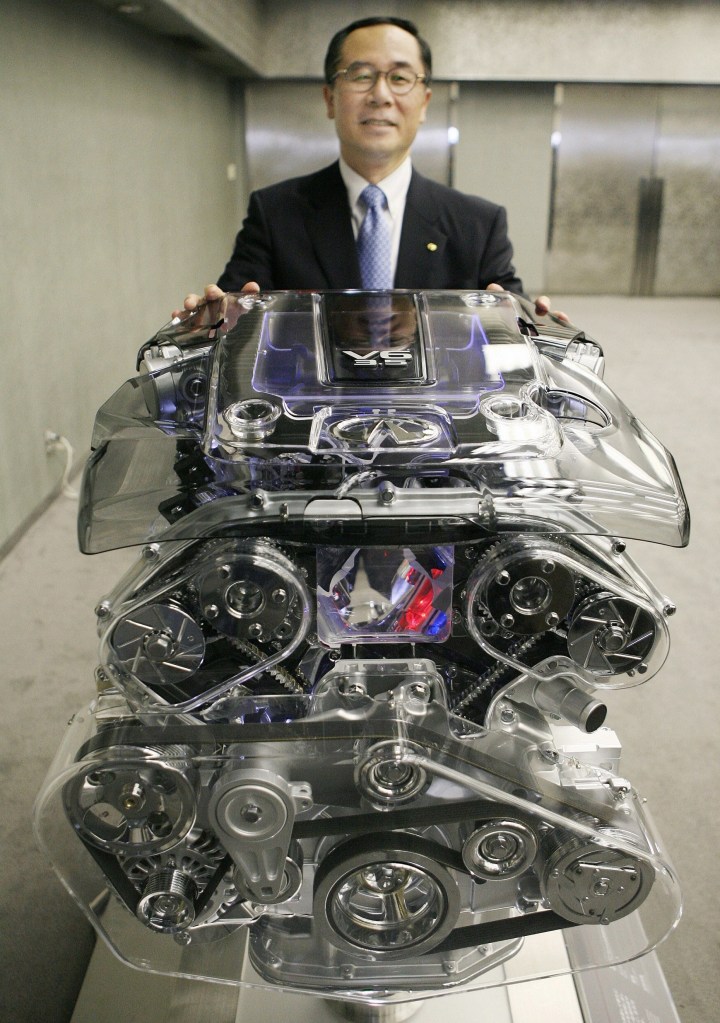
Going with a 2007-2009 Nissan 350Z eliminates some of the earlier cars’ potential problems. Although it still has some oil consumption issues, the VQ35HR has stouter timing chain guides and tensioners. Also, while it makes slightly less torque, it’s more powerful, revs higher, and is more fuel-efficient, TP says.
However, there is a VQ35HR-specific issue worth noting. Its oil galley, which keeps oil flowing through the timing system, is sealed by two gaskets. Unfortunately, they tend to fail over time and often without warning. And when they do, the sudden oil pressure drop can severely damage the engine after only a few seconds, TP warns.
There is some good news, though. For one, the 350Z’s oil galley problems are seemingly as overblown as the Porsche IMS bearing failures. Yes, these gaskets fail, but not nearly as often as some claim. Secondly, not only did Nissan redesign the gaskets, but modern replacements are significantly stouter than the originals. And while the installation process is rather involved, the parts themselves cost around $60.
So, if you’re interested in buying an HR 350Z, just check if these gaskets were replaced.
Pre-2007 Zs are more prone to transmission synchro wear
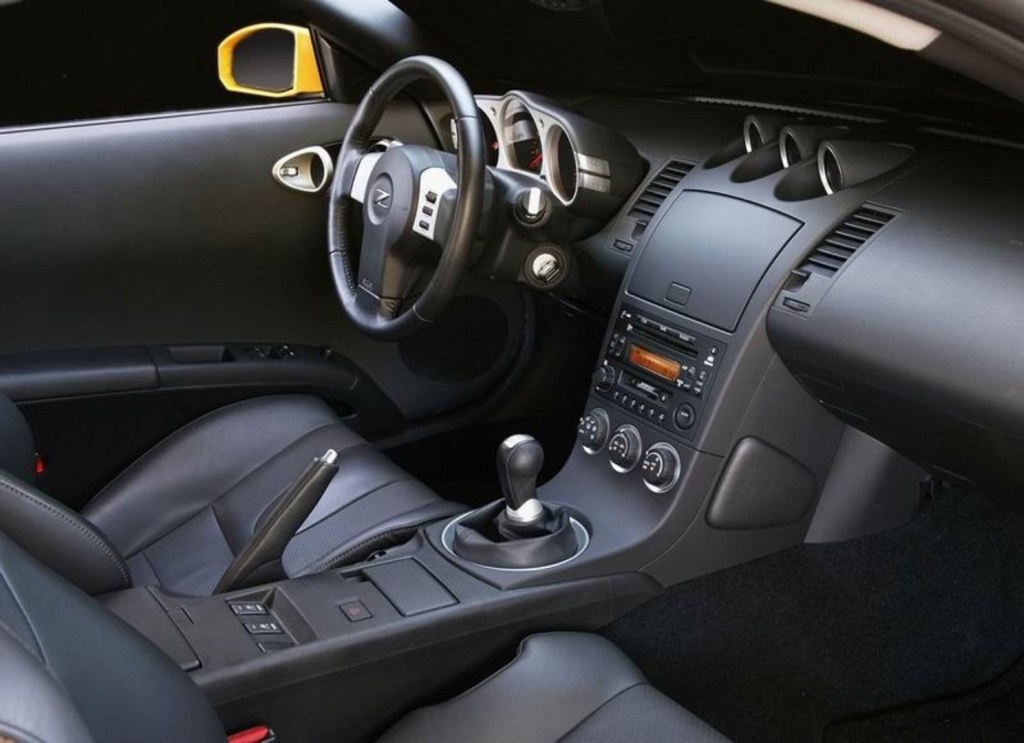
There’s another reason to get a 2007-2009 Nissan 350Z rather than one of the earlier models. In addition to the engine-specific problems detailed earlier, 2003-2006 350Zs have some additional transmission problems. Specifically, with their synchros.
Synchromesh gears, or ‘synchros,’ smooth the transitions between shifts in cars with manuals by matching (synchronizing) transmission and engine speeds. And eventually, like the clutch, they can and sometimes do wear out. But 2003-2006 Z synchros often wear faster than usual, LO reports. And while Nissan engineered the 350Z’s manual to buzz slightly during driving, shifting shouldn’t make grinding or crunching sounds.
If those sounds continue after replacing the transmission fluid, you might need new synchros. But while replacement ones aren’t that expensive—think $80-$270, depending on the gear—installation is time-consuming. Therefore, it might be more economical to replace the entire transmission with a stouter replacement. The updated OEM one costs about $2100-$2200, so parts costs are higher, but installation should be simpler.
Fuel damper failure is another common early Nissan 350Z problem
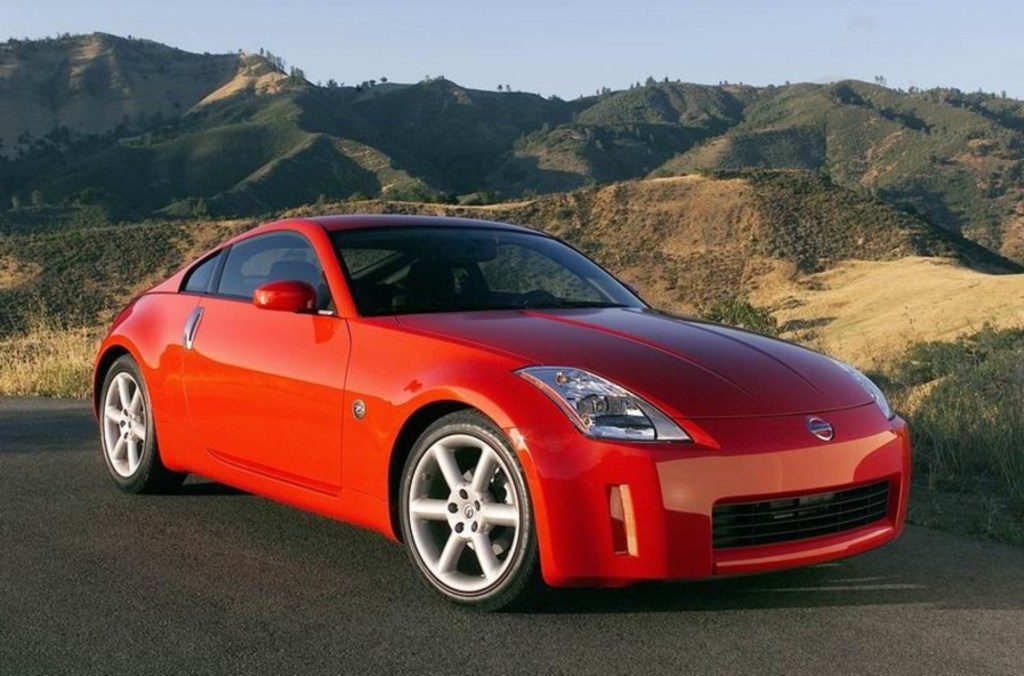
There’s one more problem that can curtail 2003-2006 Nissan 350Z enjoyment. It’s not the fuel filler hose cracks that led to Nissan recalling 2003-2004 cars, but it is fuel-related.
No matter how good your car’s fuel pump is, injectors opening and closing thousands of times per minute cause some fuel-system vibrations. To prevent fuel pressure fluctuations, automakers install fuel dampers, aka fuel pressure dampers, which smooth out the oscillations. And the pre-2007 350Zs’ fuel dampers are known to fail over time, 1A Auto says.
Unlike the timing chain and oil issues mentioned earlier, fuel damper failure won’t kill your Z outright. But it will cause your engine to stall and/or misfire and could lead to gasoline or black smoke leaking out of your exhaust. Also, owners reported hearing loud ticking, knocking, thumping, and clicking noises while idling.
There is good news, though. Nissan issued a technical service bulletin, NTB06-042, regarding failed and defective fuel dampers. Theoretically, affected 350Zs should have more durable replacements. But if your car still has the original version, know that buying and installing the part isn’t expensive or terribly difficult. In addition, 2007-2009 cars have upgraded fuel dampers that don’t fail nearly as often. So, you can avoid this problem by buying a late-model 350Z.
Hearing clicks from your driveshaft? It might need some grease
This last high-mileage Nissan 350Z problem arguably belongs in the ‘age-related’ category, but it’s unusual enough to mention here. Over time, owners report clicking noises coming from their cars’ rear axles and driveshafts, Low Offset says. This cropped up when the 350Z was still on sale, which prompted a TSB, NTB04-065b. But even now, Zs’ rear axles and driveshafts can still click.
Fortunately, there is a solution. The clicking sounds came from metal-on-metal contact from insufficient or worn-away lubrication. Basically, you just have to re-grease the driveshaft’s splines and collars. It’s a simple, easy fix that won’t take your mechanic long to perform. And it’s one of the cheapest things you can do to your 350Z.
Are these Nissan 350Z problems deal-breakers?
Admittedly, these are just some of the most common problems a Nissan 350Z might face after 100,000 miles. As noted earlier, age takes a toll on a wide variety of components. So, does that mean you shouldn’t buy a used 350Z?
Well, that depends. Timing chain and synchro failure can be expensive to rectify, especially when used Zs often cost less than $10,000. And you have to monitor your VQ’s oil level frequently; many aren’t prepared for that. However, you can avoid many of these 350Z issues by buying a 2007-2009 model. Also, a few of these problems are rather cheap and easy to fix. So, if they pop up in a PPI, plan your budget accordingly.
Yes, the Nissan 350Z has some problems, but you can fix and/or live with them.
Follow more updates from MotorBiscuit on our Facebook page.


